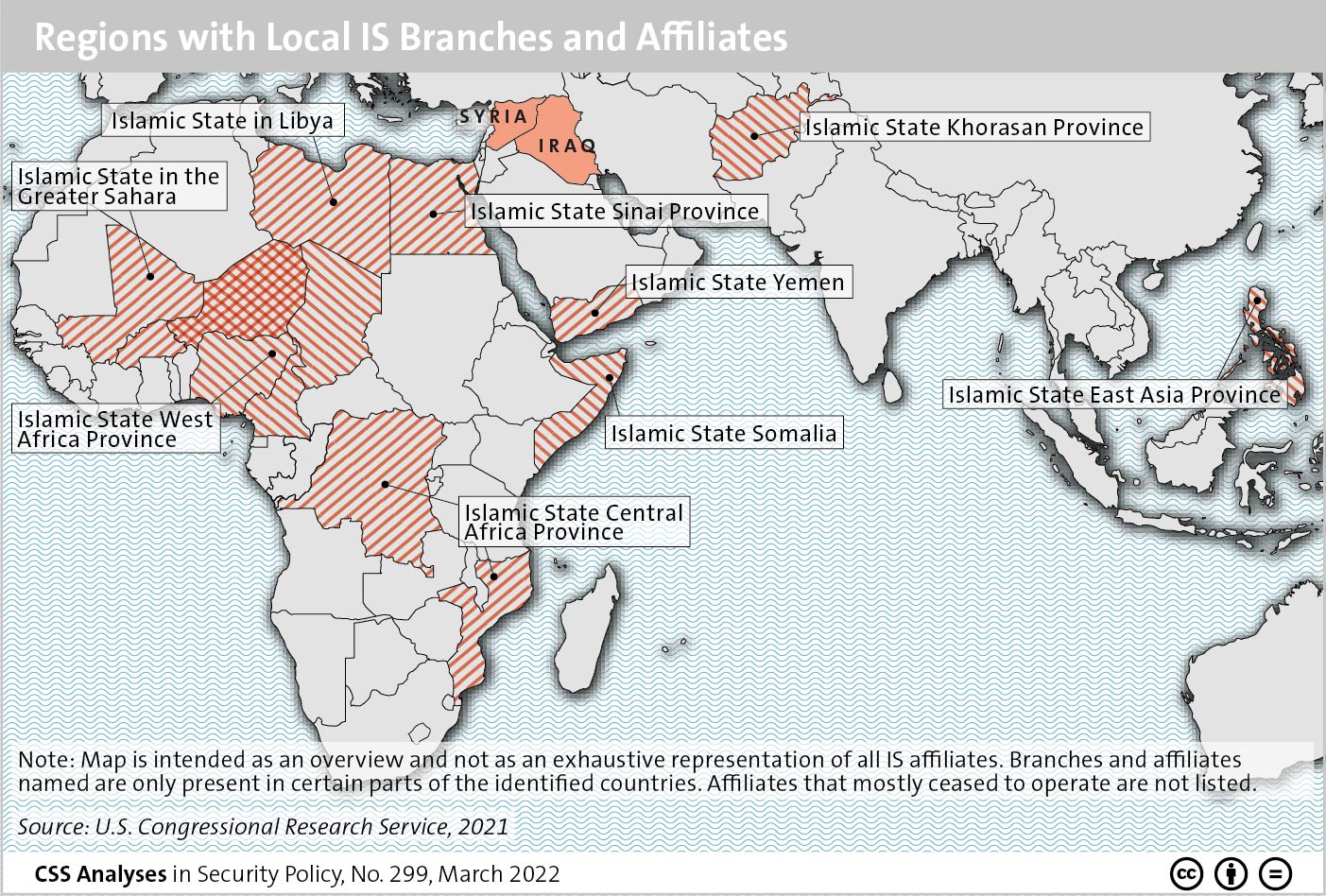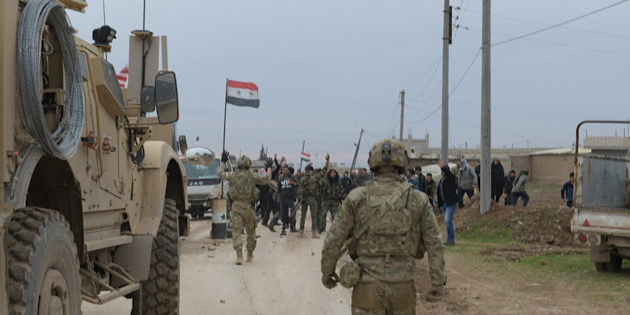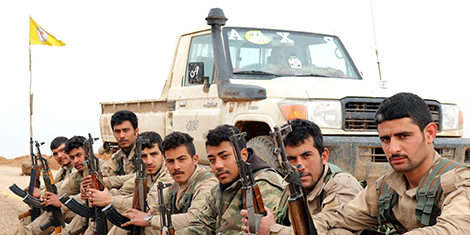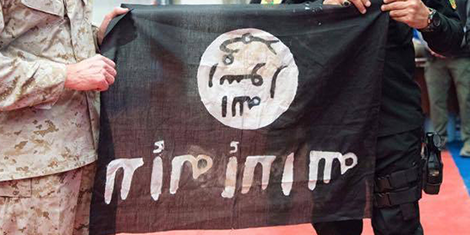
This week’s featured graphic shows the core IS’ state as of March 2022 as well as its affiliates in Africa, the Middle East and Asia. For a deeper assessment of the danger the IS still poses, read Fabien Merz’ CSS Analysis in Security Policy here.

This week’s featured graphic shows the core IS’ state as of March 2022 as well as its affiliates in Africa, the Middle East and Asia. For a deeper assessment of the danger the IS still poses, read Fabien Merz’ CSS Analysis in Security Policy here.
 Image courtesy of Jodi Eastham/DVIDS.
Image courtesy of Jodi Eastham/DVIDS.
This article was originally published by the United States Institute of Peace (USIP) on 12 March 2020.
The engagement of external actors has protracted the conflict and Syrians civilians continue to bear the brunt.
In March 2011, as the Arab world was roiled by demonstrations, protests broke out in Syria to demand political reform after four decades of Assad rule. Nine years later, the Assad regime is on the offensive against the last rebel stronghold of Idlib, with Russia, Turkey and Iran all heavily invested in the conflict. The humanitarian consequences for Syrians cannot be overstated and a political solution to the conflict seems as distant as ever. USIP’s Mona Yacoubian discusses the dreadful toll on the Syrian population and what the battle for Idlib means for the trajectory of the conflict.

This publication was originally published by Political Violence @ a Glance on 16 October 2019.
The Turkish incursion into northern Syria has revealed a central truth in international affairs: that the future of military interventions will not be Vietnam-style imbroglios or long wars of attrition. They will be mostly one-off cross-border incursions of limited lifespans, casualties, or attention (though, contrary to many recent cross-border operations, Turkey’s latest incursion has attracted a lot of attention). The terrain will be difficult and rural; the level of governance minimal.

This article was originally published by the ASPI’s The Strategist on 16 October 2019.
President Donald Trump has upended American policy in Syria, and possibly in the entire Middle East, in one stroke. His unilateral decision to withdraw American troops from the Kurdish region of northern Syria, and thus give a green light for the Turkish invasion of the Kurdish enclave, has put all American goals in Syria in grave jeopardy. These included protecting the autonomous Kurdish enclave as a quid pro quo for the Kurdish militia’s singular military contribution in liquidating Islamic State and capturing its capital Raqqa at the cost of thousands of lives. They also included preventing the regime of Bashar al-Assad from reasserting control in northern Syria (a very important US objective in Syria was to circumscribe Russia’s and Iran’s reach and influence in the country). Finally, one of the principal aims of American policy in both Syria and Iraq has been to prevent the resurgence of the IS.

This article was originally published by the Small Wars Journal on 6 March 2019.
Introduction
The Islamic State of Iraq and al-Sham (ISIS) routinely kidnaps, recruits, and employs child soldiers to carry out its operations. In recent years, ISIS possessed major land holdings in Syria and Iraq, and has carried influence on a global scale; however, the overwhelming international military response to ISIS’ brutality has largely driven this terrorist organization out of its formerly held territories. As ISIS members are displaced through battlefield losses, reintegration of former ISIS members remains a key challenge globally. ISIS has frequently used children as a part of its military operations, and hundreds of these children have been indoctrinated into ISIS ideology. The international community now faces a critical issue with the rehabilitation of ISIS children. This population was raised in a hyper-violent environment and has largely never been exposed or integrated into conventional society. As these children and their families flee to non-ISIS controlled areas or home countries, they pose a lifelong terrorism threat to the international community.